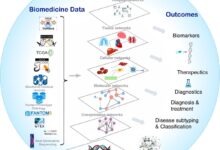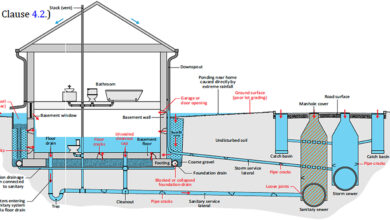System Integration: 7 Powerful Strategies for Seamless Success
In today’s fast-paced digital world, system integration is no longer optional—it’s essential. From streamlining operations to boosting data accuracy, integrating systems unlocks powerful efficiency across organizations of all sizes.
What Is System Integration and Why It Matters

At its core, system integration refers to the process of connecting different computing systems, software applications, and technologies to function as a unified whole. This enables seamless data flow, reduces redundancy, and improves operational efficiency across departments such as finance, HR, logistics, and customer service.
Defining System Integration
System integration involves combining subsystems into a single, cohesive system where each component communicates effectively. This could mean linking an enterprise resource planning (ERP) system with a customer relationship management (CRM) platform or synchronizing inventory databases with e-commerce storefronts.
- It eliminates data silos by enabling real-time information sharing.
- It supports automation, reducing manual data entry and human error.
- It enhances decision-making through centralized, accurate data access.
“Integration is not just about technology—it’s about aligning business processes, people, and data to achieve strategic goals.” — Gartner Research
Historical Evolution of System Integration
The concept of system integration has evolved significantly since the 1960s. Initially, organizations relied on monolithic mainframe systems where all functions were built into a single application. As businesses grew and technology diversified, the need to connect disparate systems became evident.
- 1970s–1980s: Point-to-point integrations emerged, but they were fragile and hard to maintain.
- 1990s: Middleware solutions like IBM’s MQ Series enabled message-based communication between systems.
- 2000s: Service-Oriented Architecture (SOA) introduced reusable services, making integration more modular.
- 2010s–Present: Cloud-based integration platforms (iPaaS) like MuleSoft and AWS AppFlow dominate, offering scalable, secure, and low-code integration solutions.
Types of System Integration Approaches
Not all integration strategies are created equal. The right approach depends on your organization’s size, infrastructure, and business goals. Here are the most common types of system integration used today.
Point-to-Point Integration
Also known as “spaghetti integration,” this method connects systems directly to one another using individual interfaces. While simple for small-scale needs, it becomes unmanageable as the number of systems grows.
- Each new connection requires custom development.
- High maintenance cost due to lack of standardization.
- Risk of cascading failures if one system goes down.
For example, connecting your CRM directly to your email marketing tool via API is a point-to-point setup. But adding payroll, inventory, and support systems leads to a tangled web of connections.
Vertical Integration (Silos-Based)
This approach groups functionalities into isolated verticals or silos. Each department—like sales, finance, and operations—has its own integrated subsystem, but cross-departmental communication remains limited.
- Easy to implement within a single business unit.
- Poor scalability when enterprise-wide visibility is needed.
- Still prone to data duplication and inconsistency.
Vertical integration might work for startups, but it hinders growth as complexity increases.
Horizontal Integration (Enterprise Service Bus)
Horizontal integration uses a central communication backbone—commonly called an Enterprise Service Bus (ESB)—to connect all systems. Instead of direct links, each system connects to the ESB, which routes messages and transforms data formats.
- Reduces the number of connections from N² to N.
- Supports protocol translation (e.g., HTTP to FTP).
- Enables better monitoring, logging, and security controls.
Tools like Apache Camel and IBM App Connect are widely used in ESB implementations.
Star Integration
A variation of point-to-point, star integration connects all systems to a central hub. While more organized than pure point-to-point, it still lacks the intelligence and transformation capabilities of a full ESB.
- Simplifies management compared to mesh networks.
- Single point of failure at the hub.
- Scaling requires upgrading the central node.
The Role of System Integration in Digital Transformation
Digital transformation is not just about adopting new technologies—it’s about reimagining how an organization operates. System integration plays a pivotal role in this journey by enabling seamless interoperability between legacy systems and modern cloud platforms.
Breaking Down Data Silos
One of the biggest challenges in digital transformation is fragmented data. Departments often use different tools that don’t communicate, leading to inefficiencies and poor insights.
- System integration consolidates data from CRM, ERP, HRIS, and other platforms into a unified view.
- Real-time dashboards become possible with synchronized data sources.
- Employees can make faster, data-driven decisions without switching between apps.
For instance, integrating Salesforce (CRM) with NetSuite (ERP) allows sales teams to see real-time inventory levels before promising delivery dates to customers.
Enabling Automation and Workflow Efficiency
Integrated systems allow for end-to-end automation of business processes. When a customer places an order online, integration ensures that the order is automatically routed to inventory, shipping, billing, and customer service systems.
- Reduces manual intervention and processing time.
- Lowers operational costs and error rates.
- Improves customer experience through faster response times.
According to a McKinsey report, companies that automate core workflows through system integration see up to 30% improvement in productivity.
Supporting Scalability and Innovation
As businesses grow, their technology stack must scale accordingly. System integration provides the flexibility to add new applications without overhauling existing infrastructure.
- New SaaS tools can be plugged into the ecosystem via APIs.
- Microservices architecture relies heavily on integration for service coordination.
- Innovation accelerates because teams aren’t blocked by incompatible systems.
For example, a fintech startup can integrate Plaid for bank data, Twilio for SMS notifications, and Stripe for payments—all within weeks, thanks to robust API-based integration.
Key Technologies Powering Modern System Integration
Today’s system integration landscape is driven by advanced technologies that make connectivity faster, more secure, and easier to manage. Understanding these tools is crucial for any organization planning an integration initiative.
APIs (Application Programming Interfaces)
APIs are the building blocks of modern system integration. They define how software components should interact, allowing systems to request and exchange data securely.
- REST APIs use HTTP protocols and are widely adopted for web services.
- GraphQL allows clients to request only the data they need, reducing bandwidth usage.
- Webhooks enable event-driven communication (e.g., “notify me when an order ships”).
Companies like Google, Facebook, and Amazon expose public APIs that developers use to integrate third-party functionality into their own systems.
iPaaS (Integration Platform as a Service)
iPaaS solutions provide cloud-based environments for designing, deploying, and managing integrations without needing on-premise hardware.
- Examples include Dell Boomi, Workato, and Zapier.
- Offer pre-built connectors for popular SaaS applications.
- Support low-code/no-code development, empowering non-technical users.
iPaaS platforms reduce integration time from months to days and are ideal for hybrid (cloud + on-premise) environments.
ETL and Data Integration Tools
When integrating systems, data often needs to be extracted from one source, transformed into a compatible format, and loaded into another—a process known as ETL.
- Tools like Talend, Stitch, and Fivetran automate ETL workflows.
- Used heavily in data warehousing and business intelligence projects.
- Ensure data consistency, cleansing, and enrichment during transfer.
For example, a retail chain might use Fivetran to pull daily sales data from 50 stores into a central data lake for analysis.
Challenges in System Integration and How to Overcome Them
Despite its benefits, system integration is not without challenges. Many organizations face roadblocks ranging from technical debt to cultural resistance. Recognizing these issues early is key to a successful integration strategy.
Data Inconsistency and Format Mismatches
Different systems often store data in incompatible formats—dates in MM/DD/YYYY vs. DD/MM/YYYY, currency in different units, or customer IDs formatted differently.
- Solution: Use middleware that performs data transformation and normalization.
- Implement data governance policies to standardize naming conventions and field definitions.
- Leverage schema mapping tools within iPaaS platforms.
For example, MuleSoft’s DataWeave engine allows developers to map and transform data between JSON, XML, CSV, and other formats seamlessly.
Legacy System Compatibility
Many enterprises still rely on decades-old mainframe systems that lack modern APIs or support for HTTPS.
- Solution: Wrap legacy systems with API gateways to expose their functionality.
- Use adapters or connectors that translate old protocols (like FTP or EDI) into modern ones.
- Gradually phase out legacy systems through a hybrid integration model.
The U.S. Department of Defense, for instance, has spent billions modernizing its IT infrastructure by integrating legacy defense systems with cloud platforms using API-led connectivity.
Security and Compliance Risks
Integrating systems increases the attack surface. Sensitive data moving between applications must be protected against breaches and unauthorized access.
- Solution: Implement end-to-end encryption (TLS/SSL) for data in transit.
- Use OAuth 2.0 or API keys for authentication and authorization.
- Ensure compliance with regulations like GDPR, HIPAA, or CCPA through audit logging and data masking.
According to a 2023 IBM Cost of a Data Breach Report, the average cost of a breach was $4.45 million—making security a top priority in integration design.
Organizational Resistance and Change Management
Even the best technical solution can fail if employees resist change. Departments may fear losing control over their data or workflows.
- Solution: Involve stakeholders early in the integration planning process.
- Provide training and clear communication about benefits.
- Start with pilot projects to demonstrate value before scaling.
Prosci’s ADKAR model (Awareness, Desire, Knowledge, Ability, Reinforcement) is often used to manage change during integration initiatives.
Best Practices for Successful System Integration
Following proven best practices can dramatically increase the chances of a smooth and effective system integration project.
Define Clear Business Objectives
Start with the “why.” What problem are you solving? Is it faster order processing? Better customer insights? Reduced IT costs?
- Align integration goals with overall business strategy.
- Set measurable KPIs like reduced processing time or increased data accuracy.
- Avoid integrating for technology’s sake—focus on outcomes.
Adopt an API-First Strategy
Designing systems with APIs as the primary interface ensures future flexibility and reusability.
- Expose core business capabilities as APIs (e.g., “get customer,” “place order”).
- Use API management platforms like Apigee or AWS API Gateway to monitor usage and enforce policies.
- Document APIs thoroughly for internal and external developers.
Companies like Netflix and Amazon have built their entire ecosystems around API-first principles.
Choose the Right Integration Architecture
Not every organization needs an ESB. Evaluate your needs before selecting an architecture.
- Small businesses: Start with iPaaS or point-to-point APIs.
- Mid-sized enterprises: Consider hybrid integration platforms (HIP).
- Large enterprises: Invest in ESB or microservices with service mesh.
The Open Group’s TOGAF framework can help architects design scalable integration blueprints.
Invest in Monitoring and Maintenance
Integration is not a one-time project. Ongoing monitoring ensures reliability and quick issue resolution.
- Use tools like Splunk, Datadog, or New Relic to track integration performance.
- Set up alerts for failed jobs, latency spikes, or data mismatches.
- Schedule regular reviews to optimize workflows and retire unused connections.
Proactive monitoring can prevent outages that cost thousands per minute in lost revenue.
Real-World Examples of Successful System Integration
Theoretical knowledge is valuable, but real-world examples illustrate how system integration drives tangible results.
Case Study: Walmart’s Omnichannel Integration
Walmart transformed its retail operations by integrating its e-commerce platform with physical store systems.
- Enabled “buy online, pick up in-store” (BOPIS) functionality.
- Synchronized inventory across 4,700+ stores in real time.
- Reduced stockouts by 30% and improved customer satisfaction.
This integration relied on a hybrid cloud architecture and custom APIs connecting SAP, Salesforce, and internal logistics systems.
Case Study: United Airlines’ Passenger Service System Upgrade
United Airlines integrated its legacy reservation system with a modern passenger service platform (Sabre).
- Improved flight booking speed and reliability.
- Enabled real-time updates for delays, gate changes, and baggage tracking.
- Enhanced mobile app functionality with personalized travel alerts.
The project took five years and required extensive data migration and employee training, but resulted in a 25% reduction in customer service complaints.
Case Study: Tesla’s Factory and Supply Chain Integration
Tesla integrates its manufacturing systems, supply chain, and customer portals into a single digital thread.
- Sensors on production lines feed data directly into ERP and quality control systems.
- Suppliers are connected via API to receive real-time demand forecasts.
- Customers can track vehicle build status from order to delivery.
This level of system integration gives Tesla unprecedented visibility and agility in automotive manufacturing.
Future Trends in System Integration
The field of system integration is rapidly evolving. Emerging technologies are reshaping how organizations connect their systems and leverage data.
AI-Powered Integration
Artificial intelligence is being used to automate integration tasks such as schema matching, error detection, and workflow optimization.
- AI can suggest field mappings between two systems based on historical data.
- Machine learning models predict integration failures before they occur.
- Natural language interfaces allow non-technical users to create integrations using plain English.
For example, Microsoft’s Power Automate uses AI to recommend automation flows based on user behavior.
Event-Driven Architecture (EDA)
Instead of polling systems for changes, EDA uses events (like “order placed” or “payment received”) to trigger actions across integrated systems.
- Enables real-time responsiveness and decouples services.
- Used in microservices and serverless computing environments.
- Tools like Apache Kafka and AWS EventBridge facilitate event streaming.
Netflix uses event-driven architecture to update user recommendations instantly after a viewing session ends.
Integration of IoT and Edge Devices
As more devices become connected—from sensors to wearables—system integration must extend beyond traditional software.
- Edge computing processes data locally before sending it to central systems.
- Integration platforms now support MQTT, CoAP, and other IoT protocols.
- Manufacturers use IoT integration for predictive maintenance and asset tracking.
Siemens, for instance, integrates thousands of industrial IoT devices into its MindSphere platform for real-time factory monitoring.
Low-Code and Citizen Integrators
Low-code platforms empower business users—“citizen integrators”—to build integrations without writing code.
- Drag-and-drop interfaces simplify workflow creation.
- Pre-built templates accelerate deployment.
- IT retains oversight through governance and approval workflows.
According to Gartner, by 2025, 70% of new integrations will be built by non-IT professionals using low-code tools.
What is system integration?
System integration is the process of connecting different software systems and technologies so they can work together as a unified whole, enabling seamless data flow and coordinated operations across an organization.
Why is system integration important?
It eliminates data silos, improves operational efficiency, supports automation, enhances decision-making, and enables digital transformation by ensuring all parts of an organization can communicate and share information effectively.
What are the main types of system integration?
The main types include point-to-point, vertical, horizontal (using an Enterprise Service Bus), and star integration. Each has its own use cases, advantages, and limitations depending on the organization’s size and complexity.
What are common challenges in system integration?
Key challenges include data inconsistency, legacy system compatibility, security risks, and organizational resistance. These can be mitigated through proper planning, middleware solutions, strong governance, and change management strategies.
What tools are used for system integration?
Popular tools include iPaaS platforms like MuleSoft and Dell Boomi, ETL tools like Talend and Fivetran, API management solutions like Apigee, and messaging systems like Apache Kafka. The choice depends on the integration architecture and business needs.
System integration is a critical enabler of modern business success. From breaking down data silos to powering automation and supporting digital transformation, it connects the dots across technology and people. While challenges exist—from legacy systems to security concerns—adopting best practices like API-first design, using iPaaS platforms, and involving stakeholders early can lead to successful outcomes. As technologies like AI, IoT, and low-code platforms evolve, the future of system integration will become even more intelligent, accessible, and essential for organizations aiming to stay competitive in a connected world.
Further Reading:









